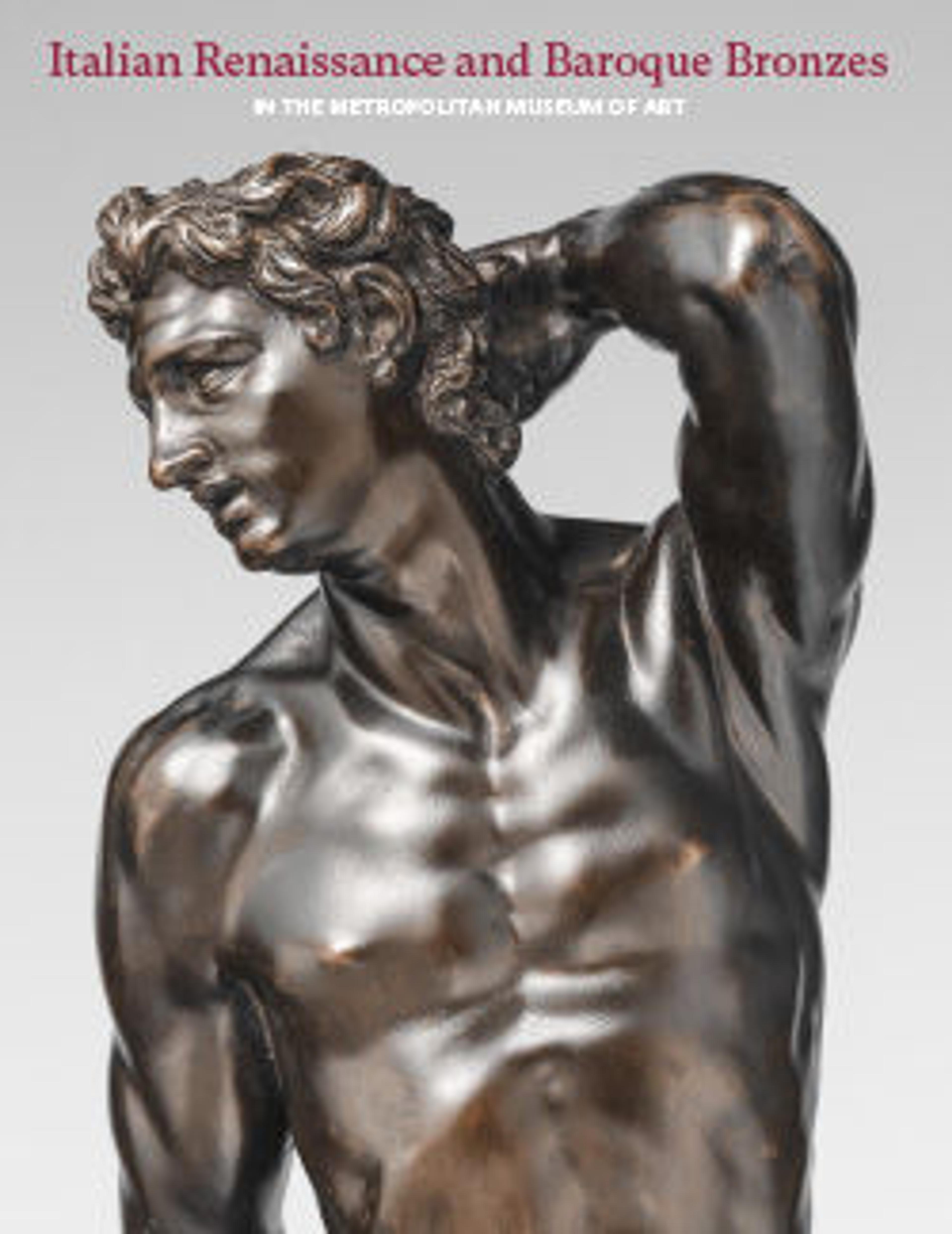Crouching Venus
The source is an ancient composition often identified as the “Aphrodite of Doidalses,” the best-known marble—and the one our bronzista consulted—being that in the Uffizi.[1] It was restored by 1704, when an engraving records the seashell that supports the goddess’ left buttock, present in our work too.[2] The conceit was that she appeared on land immediately after her birth, borne there by the shell. Our man gives her two armlets for extra allure. Reductions apparently were sold in eighteenth-century Rome by Neoclassical founders Giacomo Zoffoli and Francesco Righetti, but this one still has more than a whiff of the Baroque about it.[3]
-JDD
Footnotes
(For key to shortened references see bibliography in Allen, Italian Renaissance and Baroque Bronzes in The Metropolitan Museum of Art. NY: The Metropolitan Museum of Art, 2022.)
1. Haskell and Penny 1981, pp. 321–23.
2. Maffei 1704, pl. 28.
3. Haskell and Penny 1981, p. 323.
-JDD
Footnotes
(For key to shortened references see bibliography in Allen, Italian Renaissance and Baroque Bronzes in The Metropolitan Museum of Art. NY: The Metropolitan Museum of Art, 2022.)
1. Haskell and Penny 1981, pp. 321–23.
2. Maffei 1704, pl. 28.
3. Haskell and Penny 1981, p. 323.
Artwork Details
- Title:Crouching Venus
- Date:late 17th–early 18th century
- Culture:Italian, probably Rome
- Medium:Bronze, black lacquer patina
- Dimensions:Overall (confirmed): 5 3/4 × 2 7/8 × 3 5/8 in. (14.6 × 7.3 × 9.2 cm)
- Classification:Sculpture-Bronze
- Credit Line:The Friedsam Collection, Bequest of Michael Friedsam, 1931
- Object Number:32.100.184
- Curatorial Department: European Sculpture and Decorative Arts
More Artwork
Research Resources
The Met provides unparalleled resources for research and welcomes an international community of students and scholars. The Met's Open Access API is where creators and researchers can connect to the The Met collection. Open Access data and public domain images are available for unrestricted commercial and noncommercial use without permission or fee.
To request images under copyright and other restrictions, please use this Image Request form.
Feedback
We continue to research and examine historical and cultural context for objects in The Met collection. If you have comments or questions about this object record, please contact us using the form below. The Museum looks forward to receiving your comments.
